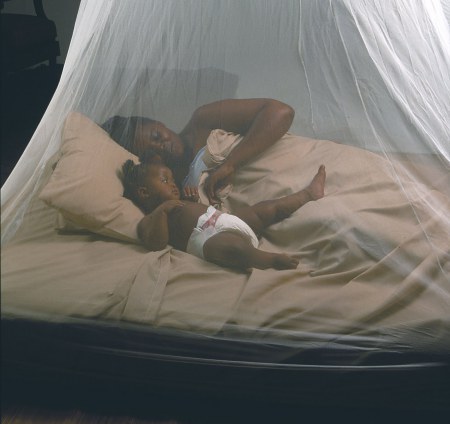John C. Baez's Blog, page 76
January 10, 2016
Information Geometry (Part 15)
It’s been a long time since you’ve seen an installment of the information geometry series on this blog! Before I took a long break, I was explaining relative entropy and how it changes in evolutionary games. Much of what I said is summarized and carried further here:
• John Baez and Blake Pollard, Relative entropy in biological systems. (Blog article here.)
But now Blake Pollard has a new paper, and I want to talk about that:
• Blake Pollard, Open Markov processes: A compositional perspective...
January 7, 2016
Glycolysis (Part 1)
I’m trying to understand some biology. Being a mathematician I’m less interested in all the complicated details of life on this particular planet than in something a bit more abstract. I want to know ‘the language of life’: the right way to talk about living systems.
Of course, there’s no way to reach this goal without learning a lot of the complicated details. But I might as well be honest and state my goal, since it’s bound to put a strange spin on how I learn and talk about biology.
For ex...
Glycolysis
I’m trying to understand some biology. Being a mathematician I’m less interested in all the complicated details of life on this particular planet than in something a bit more abstract. I want to know ‘the language of life’: the right way to talk about living systems.
Of course, there’s no way to reach this goal without learning a lot of the complicated details. But I might as well be honest and state my goal, since it’s bound to put a strange spin on how I learn and talk about biology.
For ex...
January 5, 2016
Arctic Melting — 2015
With help from global warming and the new El Niño, 2015 was a hot year. In fact it was the hottest since we’ve been keeping records—and it ended with a bang!
• Robinson Myer, The storm that will unfreeze the North Pole, The Atlantic, 29 December 2015.
The sun has not risen above the North Pole since mid-September. The sea ice—flat, landlike, windswept, and stretching as far as the eye can see—has been bathed in darkness for months.
But later this week, something extraordinary will happen: Ai...
January 3, 2016
Underestimating Renewables
The International Energy Agency, or IEA for short, is an autonomous intergovernmental organization based in Paris. They were established in the 1970’s after the OPEC embargo sent oil prices to new highs. Their main job is to guess the future when it comes to energy production. They do this in their annual World Energy Outlook or WEO.
I’ve tended to trust their predictions, since they seem to have a lot of expertise and don’t seem to have a strong axe to grind. They believe global warming is a...
January 2, 2016
Biology and the Pi-Calculus
I’m going to try posting more short articles here. I often read papers and want to jot down a few notes about them. I’ve avoided doing that here, on the theory that articles here should be beautiful works of art. Now I’ll try being a bit more relaxed. I hope you ask questions, or fill in details I leave out.
My former grad student Mike Stay has become fascinated by the pi-calculus as model of computation. The more famous lambda-calculus is a simple model of functional programming: each expres...
January 1, 2016
Azimuth News (Part 4)

Happy New Year!
I’ve been rethinking my approach to life. Nothing major, just some small course corrections.
BloggingFirst, I’ve decided to stop posting so much on Google+, and post more here on Azimuth. I explain why here:
I want a vibrant, lively online environment where people talk about things in serious, almost obsessive ways. At times this blog has been like that. So was the n-Category Café, back when a core group of people were all focused on roughly the...
December 30, 2015
An Electron in Water
What happens when a fast-moving electron hits water?
This question is important for understanding the effects of ionizing radiation, but it’s also just cool. I learned the answer here:
• H. Haberland and K. H. Bowen, Solvated electron clusters, Springer Series in Chemical Physics 56 (1994), 134–153.
There are four stages. To get a feel for these, it helps to remember that a femtosecond is 10-15 seconds. This is roughly the time it takes for light to travel a third of a micron—about 5000 times...
December 26, 2015
Good News (Part 3)

Malaria is a nasty disease, caused by mosquitoes infected with parasites. If you catch malaria, you get feverish and tired. You have headaches, and vomit. If you’re unlucky you may have seizures, fall into a coma and even die.
Almost 200 million people got malaria in 2013. Somewhere between 500,000 and a million died. 90% of these people lived in Africa.
This is good news???
Yes, it is! Since 2000, malaria funding has increased nearly tenfold. From 2000 to 2015, cases of malaria in Africa d...
December 25, 2015
Good News (Part 2)

When I visited Cambodia I went to Kompong Phluk, a village where all the houses are on stilts, and everyone knows how to swim. The villagers raise fish in the Tonlé Sap, which is the largest freshwater lake in southeast Asia. During the dry season, from November to May, this lake drains into the Mekong River near Phnom Penh. But during the monsoons, water flows back from the Mekong into the lake, and it grows six-fold in area! We took a boat ride down this muddy river into the Tonlé Sap and...
John C. Baez's Blog
- John C. Baez's profile
- 29 followers



